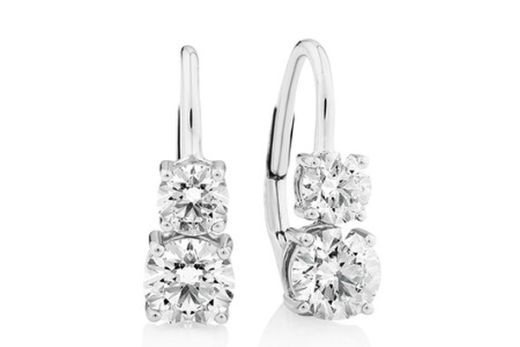Lab-Grown Prices Have Slumped, Bain Says
 RAPAPORT... Increased synthetic-diamond production led to a price drop last year, giving lab-grown a greater share of the fashion-jewelry market, according to Bain & Company.Production of lab-grown diamonds has seen double-digit growth over the past two years, reaching 6 million to 7 million carats in 2020, Bain said Monday in its annual report on the industry conducted in partnership with the Antwerp World Diamond Centre (AWDC). In 2017, the retail price of a 1-carat, G, VS-clarity synthetic diamond was 65% that of a polished natural diamond with the same attributes. That number slid to 50% of the equivalent polished in 2018 and 2019, and to 35% in 2020.That downtrend in prices, resulting from advancements in synthesis technology, could help lab-grown expand into the wider mass-jewelry segment, Bain partner Olya Linde told Rapaport News. Large fashion houses are increasingly promoting the category as an alternative to popular crystal collections, she added. "We believe additional price drops will make lab-grown diamonds accessible to a broader group of price-sensitive consumers and push them further into the fashion category, where they have growth potential," she noted.The Covid-19 pandemic has also sped up the acceptance of synthetic diamonds in the market, as consumers have less disposable income and are increasingly shopping online."Interestingly, the growth in the US was particularly strong, probably the strongest," said Linde. "What we've seen is the fact that lab-grown diamonds were originally in the e-commerce space, while natural diamonds were not, so it was easier for the growth to continue because there was less disruption from the back end."Currently, lab-grown occupies a separate share of the market than natural diamonds due to the continued product differentiation, Linde stressed."I think it's reaching a lot of different audiences," she noted. "As the technology evolves, and prices continue to go down, [synthetic diamonds] are moving more into fashion, which I believe opens up opportunities for more consumers, especially consumers who otherwise might not consider diamond jewelry. Therefore, it's not a substitution [for natural], but a real expansion of the market pie."However, should the distinction between synthetic and natural diamonds become blurred, lab-grown could offer more competition to mined stones."If the trend of product differentiation reverses, we could see more lab-grown diamonds in the premium-jewelry segment, compensating for the decreased supply of natural diamonds," Linde said.Image: A pair of lab-grown diamond earrings from the Fenix collection. (Michael Hill)
RAPAPORT... Increased synthetic-diamond production led to a price drop last year, giving lab-grown a greater share of the fashion-jewelry market, according to Bain & Company.Production of lab-grown diamonds has seen double-digit growth over the past two years, reaching 6 million to 7 million carats in 2020, Bain said Monday in its annual report on the industry conducted in partnership with the Antwerp World Diamond Centre (AWDC). In 2017, the retail price of a 1-carat, G, VS-clarity synthetic diamond was 65% that of a polished natural diamond with the same attributes. That number slid to 50% of the equivalent polished in 2018 and 2019, and to 35% in 2020.That downtrend in prices, resulting from advancements in synthesis technology, could help lab-grown expand into the wider mass-jewelry segment, Bain partner Olya Linde told Rapaport News. Large fashion houses are increasingly promoting the category as an alternative to popular crystal collections, she added. "We believe additional price drops will make lab-grown diamonds accessible to a broader group of price-sensitive consumers and push them further into the fashion category, where they have growth potential," she noted.The Covid-19 pandemic has also sped up the acceptance of synthetic diamonds in the market, as consumers have less disposable income and are increasingly shopping online."Interestingly, the growth in the US was particularly strong, probably the strongest," said Linde. "What we've seen is the fact that lab-grown diamonds were originally in the e-commerce space, while natural diamonds were not, so it was easier for the growth to continue because there was less disruption from the back end."Currently, lab-grown occupies a separate share of the market than natural diamonds due to the continued product differentiation, Linde stressed."I think it's reaching a lot of different audiences," she noted. "As the technology evolves, and prices continue to go down, [synthetic diamonds] are moving more into fashion, which I believe opens up opportunities for more consumers, especially consumers who otherwise might not consider diamond jewelry. Therefore, it's not a substitution [for natural], but a real expansion of the market pie."However, should the distinction between synthetic and natural diamonds become blurred, lab-grown could offer more competition to mined stones."If the trend of product differentiation reverses, we could see more lab-grown diamonds in the premium-jewelry segment, compensating for the decreased supply of natural diamonds," Linde said.Image: A pair of lab-grown diamond earrings from the Fenix collection. (Michael Hill)